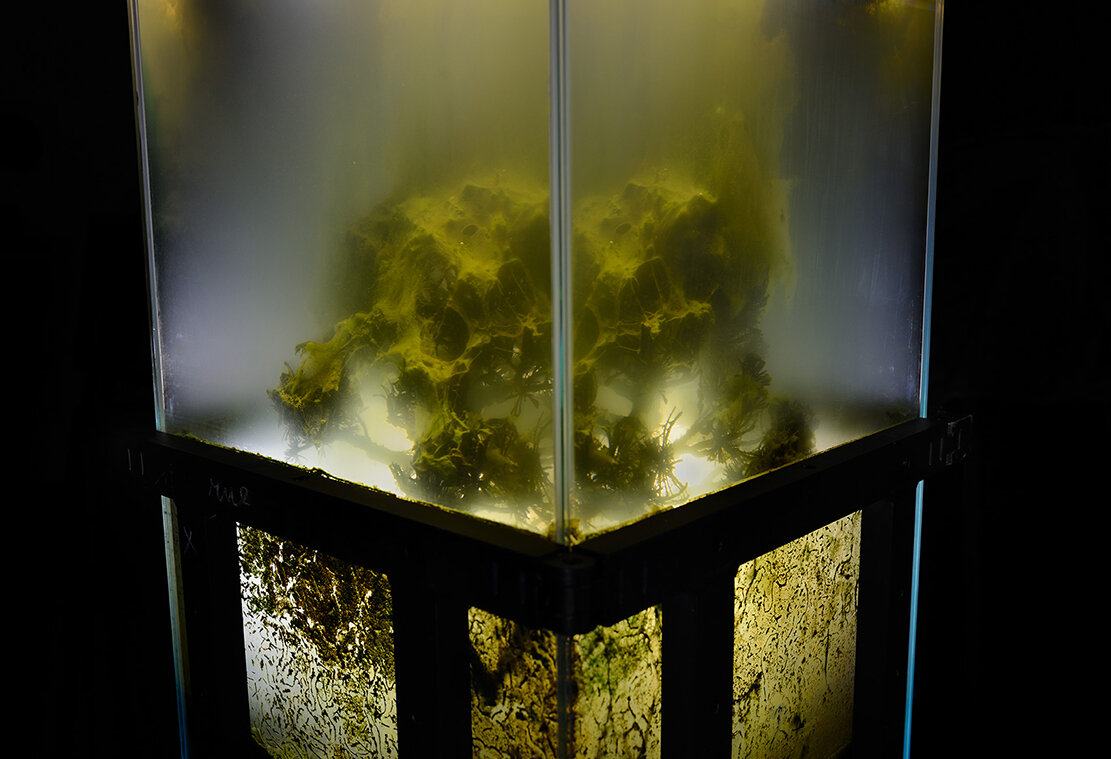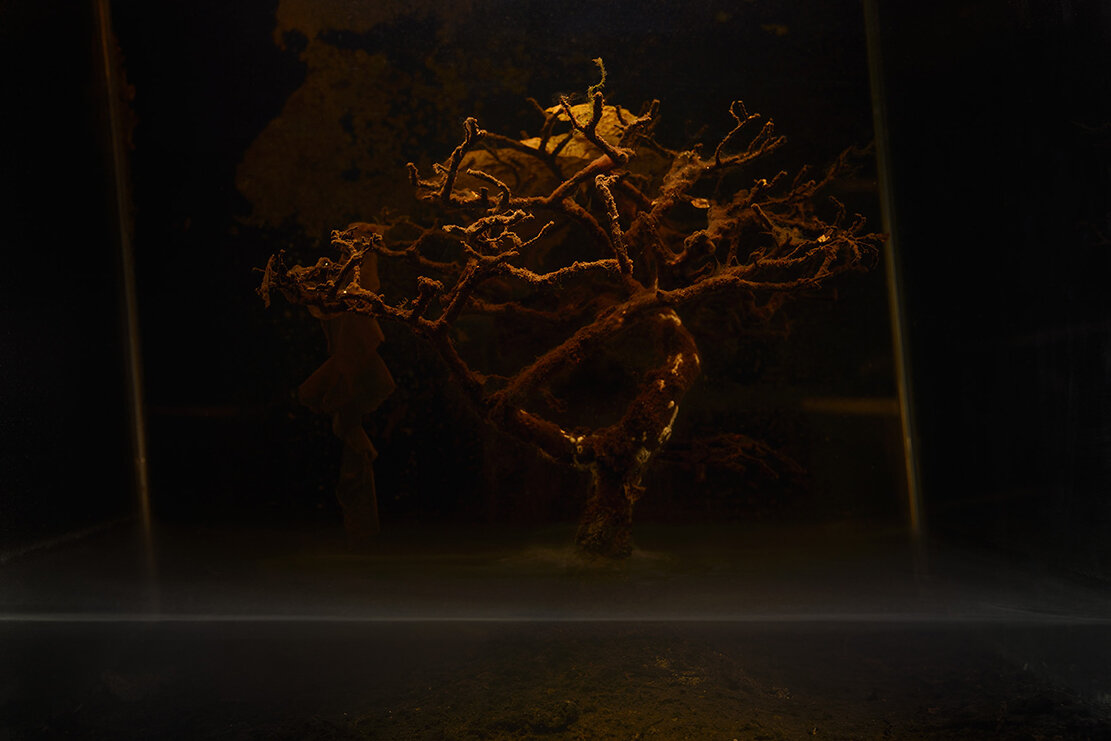aGUA COn Gaz (2014-2017)
Various Artists.BLFDWWLTEOMA, San Gimignano, 2015
Water is the new oil. Water supplies are privatized goods in our current times and are owned by big world leading companies. The challenges the world is facing around water are immense. There are no unilateral laws yet, and nobody takes responsibility.
Water will become the world’s next major security and economic challenge.
"One way or another, water will soon be moved around the world as oil is now." (World Bank)
The rapid economic and demographic expansion already turned potable water into a major issue across large parts of the world. As fresh drinking water becomes more and more scarce, the world can expect violent conflicts over water to become more commonplace, destabilizing entire regions of the world.
Various Artists.BLFOMADDWTLE, Agua con Gaz, Galleria Continua, San Gimignano, 2015, 24 aquariums, bonsai, aluminium bases, and lights. Photo by: Ela Bialkowska
This water stress has unfortunately not led us to unilateral jurisdiction and protection of water resources as commons. On the contrary. Privatisation has been the worlds answer so far to the increasing global water stress. Services once provided by government agencies are more and more provided by corporations. These corporations are going around the world securing access to springs and groundwater supplies, then bottling the once publicly-owned water and selling it back to us at exorbitant prices. Along the way they are causing serious harm to the environment, pumping springs dry, pulling toxins and other impurities into the groundwater, devastating wetland ecosystems, and draining aquifers.
Various Artists.BLFHTH, 3 Bomen, Drown.ke, pae and io, Galleria Continua, San Gimignano, 2015, video, 2 screens, compositing: Alexis Destoop & Devi Mallal. Photo by: Ela Bialkowska
Dams are being build all over the world, resulting in political and social tensions on different levels - local, national, global. The large-scale pumping of groundwater for urban planning and misplaced monocultures in agriculture leads to a dramatic decrease in the groundwater with landslides and droughts as a result.
Addressing this core problem holds the key to dealing with other challenges because of the nexus of water with global warming, energy shortages, stresses on food supply, population pressures, pollution, environmental degradation, global epidemics and natural disasters.
Agua con Gaz (detail), Gallery Joey Ramone, Rotterdam, 2017. photo by: Antoine Meyer
“Água com Gás is a monument to the evolution…of ethical ideas, of what is right and what is wrong. If religion imposes the idea that those values are unchanging, art tells us they are positive, they evolve and they change. Globalisation has taught us they are not only time-specific but also place-specific…” Bartolomeu Marí, 2016
During a trip through Southern Europe Various Artists were confronted with scenes of completely changed landscapes caused by the construction of hydroelectric dams. Such large projects subsidised by the E.U. are a way to generate energy and to ensure water supply for industrial agriculture at the expense of the original flora, fauna and culture of an ancient landscape. Drowning Bonsai recreates the image of drowned olive groves and confronts us with the extreme impact culture can have on nature.
The title Água com Gás originated in São Paulo at an interview during the build up of the show at Luisa Strina (2012). We realised that Le Château was part of a bigger plan and invented on the spot the "The Great K."* project. Because we were only drinking water (preferably sparkling water) during the fast (proposed by Morice de Lisle) the water topic got named Água com Gás.











